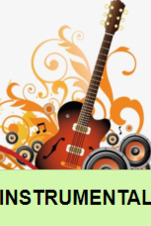Hardcore audiophiles are always in search of the top-notch quality of music and they are bent upon scaling every crest and trough for that purpose. Being an audiophile is a curse and also, a boon. The endless research of a lifetime is worthy of that one moment's bliss of heavenly music, the same music that had never touched your soul before. One is not far away from such rhapsodic moments if they get familiar with certain basic sine qua nons of music.
Normally, the sound we hear is a continuous analogue sound. When it is stored in audio systems, it gets converted into digital format. The digital format is a 'dead' format where the sound is stored in sharply demarked numerical bits equivalent to the pixels in an image. This type of format is non-continuous, broken into small fractions and encoded. When we play it, it is again converted into a live analogue sound wave.
Various types of digital sound recording and storing formats are available and so are various theories regarding their quality and so many mushrooming confusions even among the professionals, leave alone a layman. Let us try to explain various strings related to the audio world so that even the lawnmower boy or a commonplace milkman who are always seen rushing around with their earphones in or headphones on, won't be in a mare's nest picking up the desirable quality of music.
Let's get familiar with these common musical grooves:
1. Bit depth and music quality
2. Sample rate and music quality
3. File storage format and music quality
4. Resolution and clarity of music
Bit Depth and Music Quality
Music can be digitized using a 16-bit recording, 20-bit recording, 24-bit recording or higher. What does it mean? Does a higher bit depth mean a superior music quality?
Any kind of vocal or instrumental sound which is produced naturally has a maximum loudness of 65-70 dB. If it is beyond 70 dB, we won't call it 'music'. In other words, the dynamic range of music is from 30 dB to 70 dB. ( To give you a rough idea of dB: Low whispering or silence in rural area ~ 30 dB; Normal human conversation, refrigerator sound, sound of AC or dishwasher or that of a UPS is ~ 50 dB; Clock alarm or telephone ring is ~ 80 dB, Passing train or truck ~ 90 dB; Pain threshold of human ear is ~ 140 dB, Loud firecrackers or take-off of jet is ~ 150 dB; Permanent ear damage occurs around 160 dB; and if > 180 dB death ensues. Note: All measurements done ~ 25 feet distance from the source.) We are considering the extreme case like that of a symphony orchestra, normally it is much below 70 dB.
A 16-bit depth recording provides a 96 dB dynamic range, and practically, that is sufficient enough to record the music in a well soundproof recording chamber. There is something called as 'noise floor' which is a minute noise created by recording sound equipment which is also recorded along with the music; in most cases it is not greater than 18 dB. When a 96 dB dynamic range provided by 16-bit recording is quite sufficient to record music, why on earth will someone go for 24-bit which provides a 144 dB dynamic range? Well, 16-bit sound could be compared to reading a newspaper without using a lens and 24-bit or higher sound could be compared to reading it with a lens. With a higher bit depth, two things are achieved – Magnification and Separation. These things are very important for recording technicians for mixing and processing music. Resolution is altogether a different thing; it should not be confused with magnification. All in all, 24-bit depth is the bit depth of choice while recording the music for the same reasons stated above.
The musician recorded the song to the best of his ability, burned a CD and you purchased that CD. You intend to play it in your environment. It could be your home, office, car, train or a plane. Now here, unlike the recording room, the noise floor is different! Here it could be as high as 60 dB itself due to surrounding ambient noise. If you play a 16-bit recorded song in such ambiance, you won’t be able to hear soft tones in your music as they would be masked by the noise floor. You try to increase the volume of your CD player up to 96 dB which is the limit of 16-bit recording. 96 dB is loud enough to bring fatigue to your ears but may not be sufficient enough to project softer tones. Had it been a 24-bit recording, you could have heard those tones very easily. But, that too, at the cost of extra loudness and ‘what-the-hell’ kind of look on the faces of surrounding people. Is it worth it? You decide this from a seat of a listener and not from that of a recorder.
As far as quality of music or resolution factor is concerned, there is almost no difference between 16-bit and 24-bit recording. Blind listening tests have confirmed this fact as well as expert musicians, too. For that matter, we have 12-bit recordings which sound as melodious as 16-bit!
Sample Rate and Music Quality
Frequency is another important dimension of the sound. After the recording is over, the playback should be produced in the frequencies audible to the human ear. The theory is that if the music is recorded at the sample rate of x kHz per second, the highest frequency generated during the playback will be x/2 kHz. Naturally, musicians prefer 44 kHz sample rate for recording which will generate a frequency as high as 22 kHz, a little above the threshold of human hearing. This is the reason, most of us can identify the difference between the music tracks recorded at 22 kHz and 44 kHz but not between 44 kHz and 96 kHz. There's virtually no point recording music at a sample rate of more than 96 kHz unless you are composing music for bats and dolphins…..
File Format and Music Quality
Which file format should be chosen for listening to an audio track? This depends upon the storage space available, the type of musical instrument you use for listening and the purpose for which the track is to be played.
Two types of audio file formats are available:
1. Those having proprietary rights e.g. PCM file formats which include WAV of Windows and AIFF of Apple.
2. Open source royalty-free formats without any constraints. They are of 3 types: a) Lossless uncompressed type e.g. PCM b) Lossless compressed type e.g. FLAC c) Lossy and compressed type e.g. MP3 and AAC.
Of all these, MP3 and FLAC formats are highly popular and they will be detailed in a separate article.
Now, as far as file storage size is concerned, these formats could be arranged in descending order as follows: PCM > FLAC > MP3 > AAC As for clarity, lucidity, transparency and production of nuanced sound signals is concerned, they could be arranged in descending order as follows: PCM > FLAC > AAC > MP3
Just glance over the following figures. They should give you a comparative idea of different file sizes. Each of the following is a 3-minute stereo track recording. A stereo track is a two-track recording. If it is an eight-track recording, you have to multiply the figure by four and so on.
File Sizes at Different Bit rates: A Comparison
- 24-bit / 96 original PCM File ~ 98 MB
- 24-bit / 96 FLAC File ~ 58.8 MB
- 24-bit/44.1 FLAC File ~ 28 MB
- 16-bit / 44.1 original PCM File ~ 30 MB
- 16-bit / 44.1 FLAC File ~ 18 MB
- 320 kbps MP3 File ~ 7.2 MB
- 320 kbps AAC File ~ 5.8 MB
- 256 kbps MP3 File ~ 5.8 MB
- 256 kbps AAC File ~ 5.2 MB
- 192 kbps MP3 File ~ 4.3 MB
- 192 kbps AAC File ~ 4.2 MB
- 128 kbps MP3 File ~ 1.9 MB
The basic difference between lossless formats like PCM, FLAC and lossy formats like MP3, AAC is that while you can rip multiple CDs without any loss of sound quality from lossless ones ( as they are primary source files ), the same is not true in the case of lossy ones. Here, too, blind listening tests were performed and more than 95% listeners couldn’t make out any difference between a FLAC file and a 256 or 320 kbps MP3 file, unless they were played on big music systems or through sensitive DACs. So you see, a FLAC file is like an umbrella opened while MP3 is an umbrella closed. PCM file is like a garden and MP3 is like a flowerpot. I personally prefer FLAC, it might be a psychological obliquity!
Naturally, a question arises in the mind - Is there any technology which gives the experience of high resolution audio while compressing the audio signals to a minimum level? A new Hi-res audio technology, MQA, is capable of delivering music which goes very close to FLAC while keeping the file size to less than half of the original, although MQA is a lossy format. But if you have enough storage space, FLAC definitely has an edge over MQA.
Resolution and Music Quality
Who would not love listening to music with the best legibility and purity in this era of delightful revolution of digital music? It could be achieved with modern recording and extracting audio equipment quite effectively. If you want to experience that rich or 'out of world' type of music, Audioquest Dragonfly DAC is indispensable in addition to a decent pair of noise cancelling headphones (not ear-phones!). This duo is no less than magic. This little device -Audioquest Dragonfly- breathes so much life into our day-today music that once you hear it, you won't go back to your former set up, to be sure. Like that crystal clear sea-water which enables you to see all minute objects present in the sea, you will listen every minute detail that won't hurt your ears even if you pump up the volume. Read the revives and decide for yourself!
The same principle which works behind high-resolution photography could also be applied to music. Have you ever wondered why the images taken with a modern camera look so much clearer, more distinct and full of minute details? Shoot your pet (in a camera, of course) and take out a print at a good resolution. You may feel as if every hair and every shade of color on his skin just stands out so distinctly, a feeling you won’t get otherwise looking at him. The reason is this – Keeping the geometrical screen size or image size constant (say, 15 cm x 9 cm), if you go on snapping the same scene with higher megapixel, you will get progressively better resolution and clarity until the threshold of human eye is reached which is 325-350 ppi. Beyond this limit, a higher megapixel camera will yield the same quality of image for that particular image size.
Applying the same theory to music: Record a soundtrack with a progressively higher bit rate and compress it back to 16-bit dynamic range, every time you get a track with better resolution.
Bit rate = Bit depth x Sample rate x channels. OR
Bit rate = Bits per Sample x Samples per second x No. of channels
No need to go into those details. This compression is quite different to the compression of a lossless file to a lossy format. Here, the compression is being done without changing the audio format.
People often ask: How to enhance ‘quality’ of a track which sounds ordinary? This is like asking: How to enhance the image quality of a 3-day-old rose? No camera in the world is capable of doing that. Source quality has to be at par. So, in a practical sense, this question is meaningless.
Finally, a word on conversion of a lossy file to a lossless format. There are many software available which claim to convert a lossy file like MP3 into a lossless file like FLAC. Is it possible? A lossy file is a truncated or clipped file in which fine offshoots are lost permanently, so it is not possible to bring them back. At the most, such software can decompress a file but can't convert a lossy file into a lossless format back again. If you cut a piece of paper into smaller ones and fold them, you can at the most unfold them but can’t make the original one again. I have read Sony advertising their high-resolution MP3 players doing this trick. Totally absurd. This means either of these two things: Either an advertising hype, it is an attempt to fool or delude a layperson OR Sony engineers don't know these basics!
♩♪♫♬♭♮𝄞𝄟𝄠𝄱𝄲𝄳𝅘𝅥𝅘𝅥𝅮𝅘𝅥𝅯𝅘𝅥𝅰𝅘𝅥𝅱𝅘𝅥𝅲𝆔𝆕𝆺𝅥𝅮𝆹𝅥𝅯𝆺𝅥𝅯 😎
➤ More entertainment: Click to open-










































0 comments:
Post a Comment
Hey! Don't spread CORONA but you can share and spread this article and make it viral ! 😊